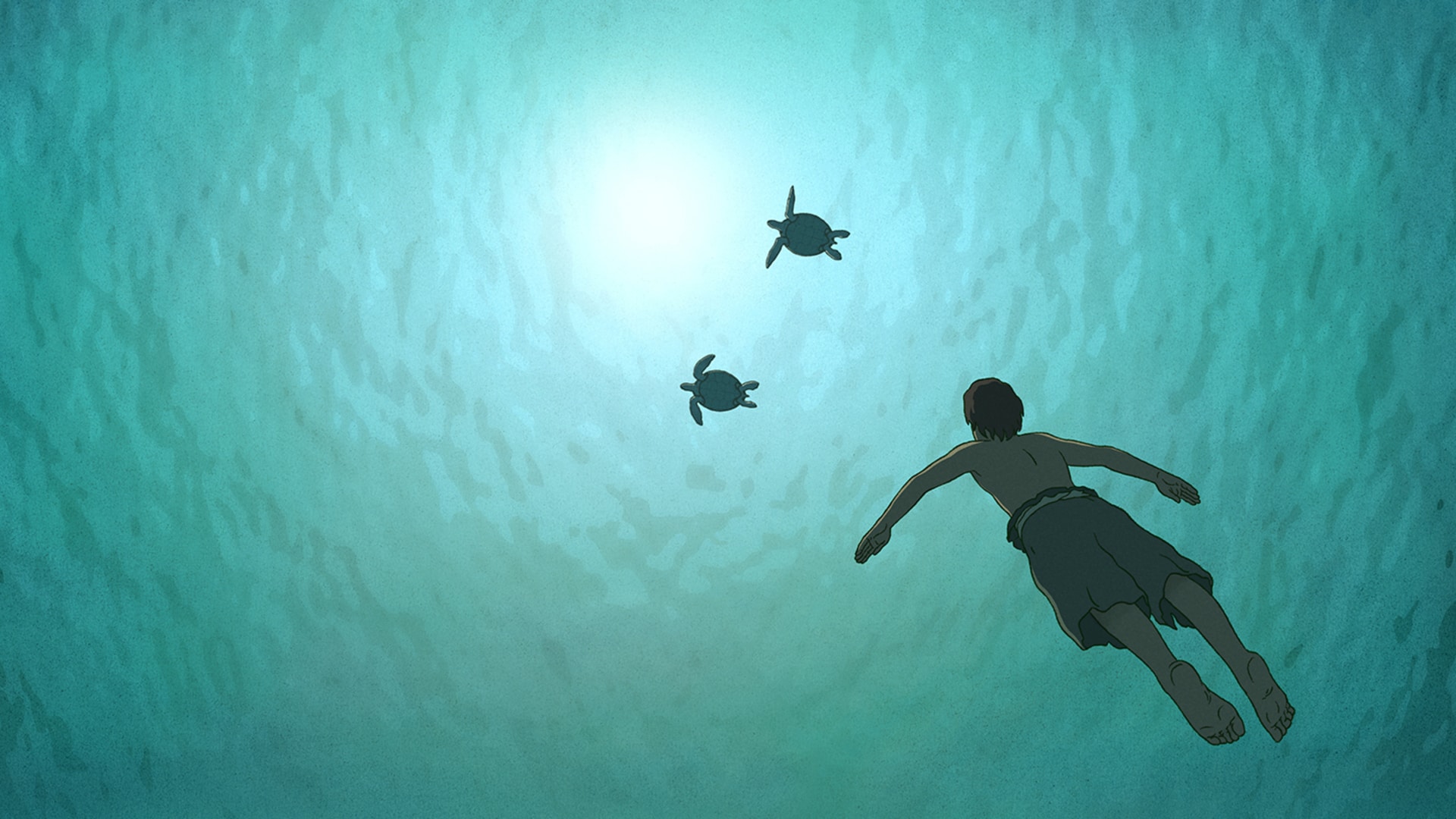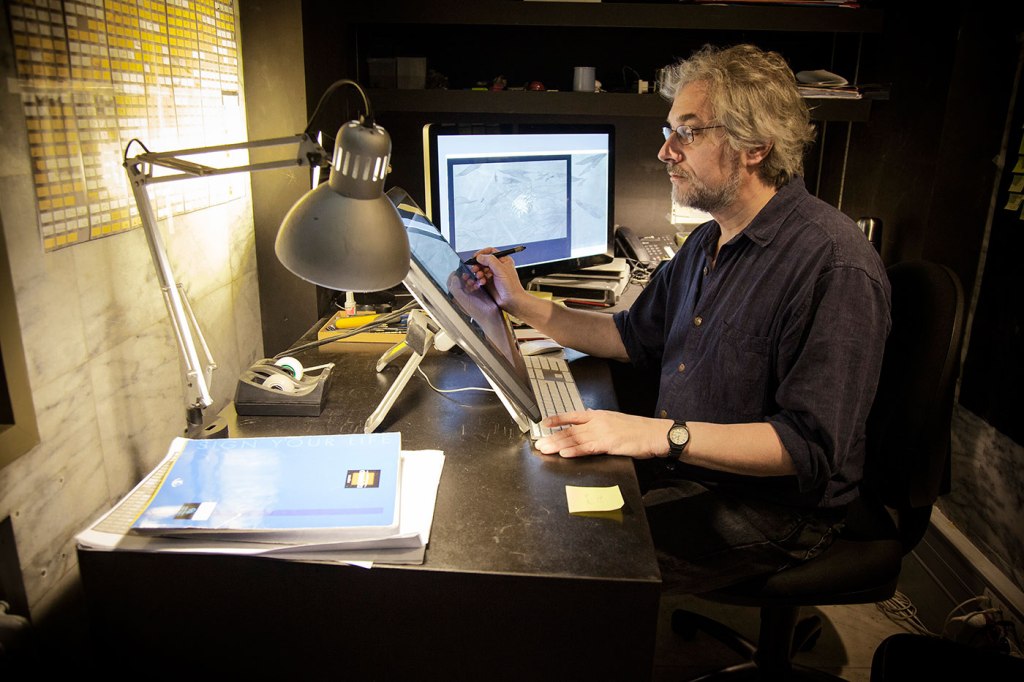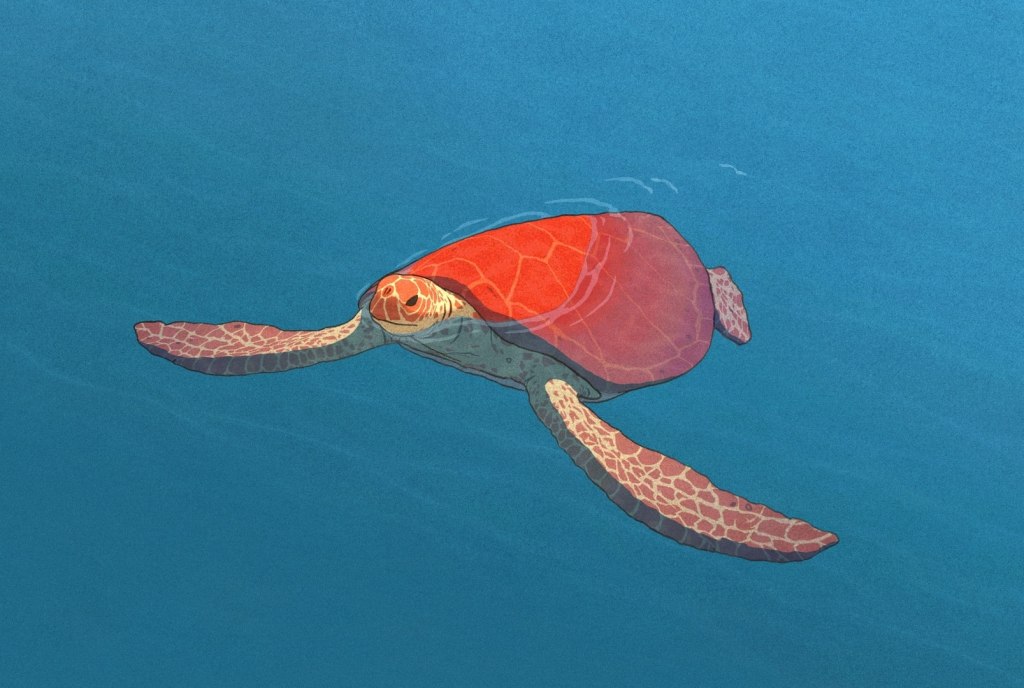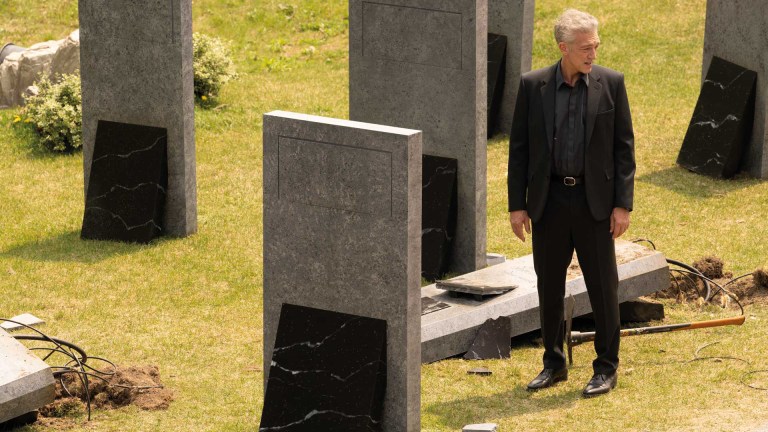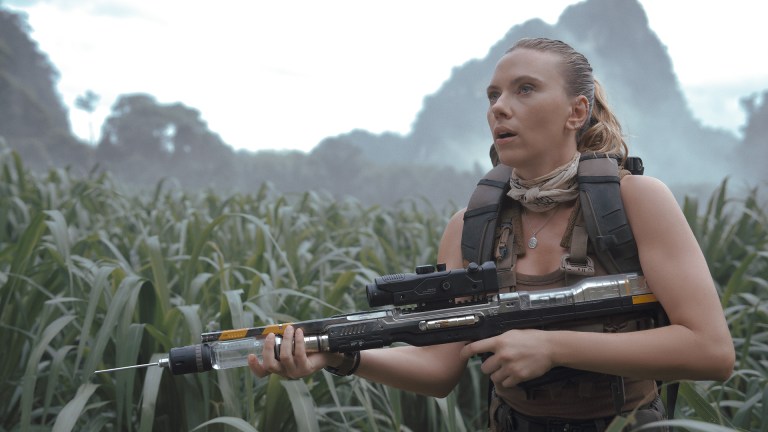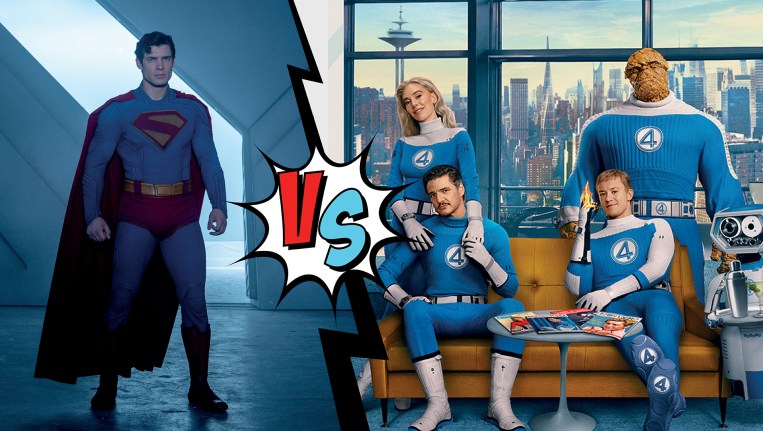Not everyone has spent much time on a desert island – why are stories set there so universal?
Some idealise tropical islands, for others it’s the idea of hell. I don’t think either version is right. Beaches can be filthy, the sky is often grey, there are very irritating insects. Solitude is the tough part. I did research, if people are stranded, even if they have water or food, they can’t handle the solitude. The shock of being alone is too big for some people.
Did you ever have a pet turtle or tortoise?
Funny you should ask. We had a little tortoise in the garden when I was about eight years old, it lasted about for about two years and disappeared. I’ve never found out where it went. I had little green turtles in an aquarium as well. They should never be looked over by a child because they all died.
Turtles (apart from the Teenage Mutant Ninja Turtles) are not particularly expressive, so are they a natural choice for an animator?
That worked for me, she just expressed enough for the purpose she was fulfilling in the story. I knew the story was going to be a man on a desert island, I knew he would leave the island to go home and I knew something would stop him. When I was writing I thought maybe the weather, or something in the ocean. I was walking in the garden one day and thought how about a big marine creature like a turtle? Later I analysed it, why a turtle? Why not a shark but that would be totally different with the energy of predator and prey. A turtle is peaceful, non-aggressive. They are solitary creatures, they swim into the endless distance. They convey a sense of immortality that works with the story. They are, to put simply, infinity.
Advertising helps fund Big Issue’s mission to end poverty
Immortal until they end up on their back. Fragile immortality.
Absolutely…
It’s a film about isolation but most animated films are bright, bold and fast-moving. Are audiences accepting different kinds of animated films telling different kinds of stories?
There is a change in trend. It’s very slow. There’s still a perception that animated films should be about witty dialogue, speaking animals, very saturated colourful images. All that works but there is a trend now for more adult animation. I still get people who say, oh you’ve made this feature, I’ll bring my daughter to it. What about yourself? It’s made for adults – it’s very child friendly but I had adults in mind.
The Red Turtle combines hand drawn elements with more modern technology.
I like hand drawn stuff because I’m a craftsman, I like the imperfection of the craft, the texture. We like the line, we’ve always liked the line. 20,000 years ago cave paintings were very simple line drawings, it’s deeply rooted in our psychology to enjoy a line drawing.
Advertising helps fund Big Issue’s mission to end poverty
The Red Turtle is different from most other Studio Ghibli films but at the same time shares a lot in common. What characterises a Studio Ghibli film?
I’ve asked myself the same question often because they stand out as a studio. The best I can say is the directors who’ve made these films have a mature way of working with their imagination. Fantasy and imagination by itself is not a positive quality, it depends what you do with it. You have to use metaphors and mystery rightly. You have to overwhelm or not overwhelm people and know why you’re doing it. For that you need a certain sensitivity and maturity and they have that at Studio Ghibli.
This film has been a ten-year journey for you. How do you feel now it’s coming to an end?
A common thing in the animation industry is post-completion blues. When you work flat out, work and work, with one purpose: finish the film. Then it’s finished and you can’t go back. It’s done, out of your control, it now belongs to the spectators. Suddenly all the fatigue comes in. For some people it’s a low moment that can last for weeks. You fall ill, you have to withdraw and heal and start again. I was expecting that. It often goes with some depression, but I had no time. Before the film was completed we were into promotion. I started travelling intensely and that was almost as intense as making the film. There has not been a big down at the end of the film, apart from a day here or there.
Sometimes after watching the credits of an animated film that maybe wasn’t that special, I wonder what the hundreds of people who spent hundreds of hours working on it feel like.
I can’t imagine how terrible that must be. A film where you are genuinely ashamed and really disappointed after working years on it…? That must be one of the lowest experiences on this planet.
Advertising helps fund Big Issue’s mission to end poverty
The Red Turtle will be available on DVD and Double Play on September 25
